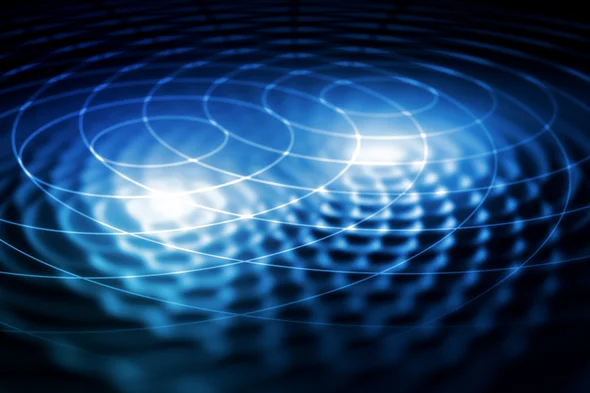For the first time, scientists have observed quantum interference—a wavelike interaction between particles related to the weird quantum phenomenon of entanglement—occurring between two different kinds of particles. The discovery could help physicists understand what goes on inside an atomic nucleus.
Particles act as both particles and waves. And interference is the ability of one particle’s wavelike action to diminish or amplify the action of other quantum particles as two boat wakes to cross in a lake. Sometimes the overlapping waves add up to a bigger wave, and sometimes they cancel out, erasing the wave. This interference occurs because of entanglement, one of the weirder aspects of quantum physics, which was predicted in the 1930s and has been experimentally observed since the 1970s. When entangled, the quantum states of multiple particles are linked so that measurements of one will correlate with measurements of the others, even if one is on Jupiter and another is on your front lawn.

